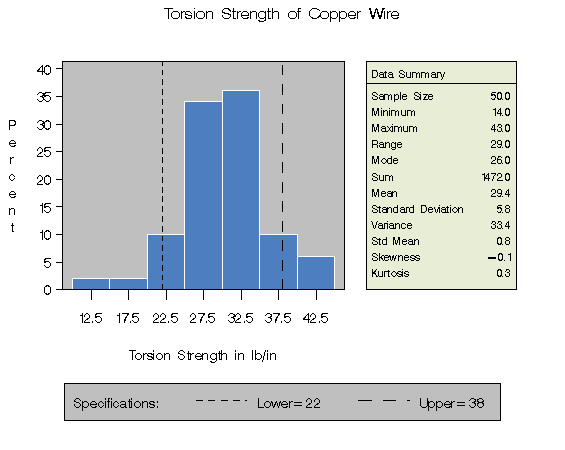Chapter Contents
Previous
Next
|
Chapter Contents |
Previous |
Next |
| INSET Statement |
| See CAPINS1 in the SAS/QC Sample Library |
In the previous examples, the inset is displayed in the upper left corner of the plot, the default position for insets added to histograms. You can control the inset position with the POSITION= option. In addition, you can display a header at the top of the inset with the HEADER= option. The following statements create the chart shown in Figure 5.3:
legend2 frame cframe=ligr cborder=black position=center;
proc capability data=wire noprint;
spec lsl=22 llsl=2 clsl=black
usl=38 lusl=20 cusl=black;
histogram strength / cframe = ligr
cfill = bigb
legend = legend2;
inset n = 'Sample Size' min max range mode sum mean
std = 'Standard Deviation' var stdmean skewness
kurtosis / format = 6.1
pos = rm
header = 'Data Summary'
cfill = ywh;
run;
The header (in this case, Data Summary) can be up
to 40 characters.
Note that a long list of inset statistics is requested.
Consequently,
POSITION=RM is specified to position the
inset in the right margin. For more
information about positioning, see
"Details".
Also note that the FORMAT= option is used to format
all inset statistics.
The options, such as HEADER=, POSITION=, and FORMAT=,
are specified after the slash (/) in the INSET statement.
For more details on INSET statement options, see
"Dictionary of Options".

|
|
Chapter Contents |
Previous |
Next |
Top |
Copyright © 1999 by SAS Institute Inc., Cary, NC, USA. All rights reserved.